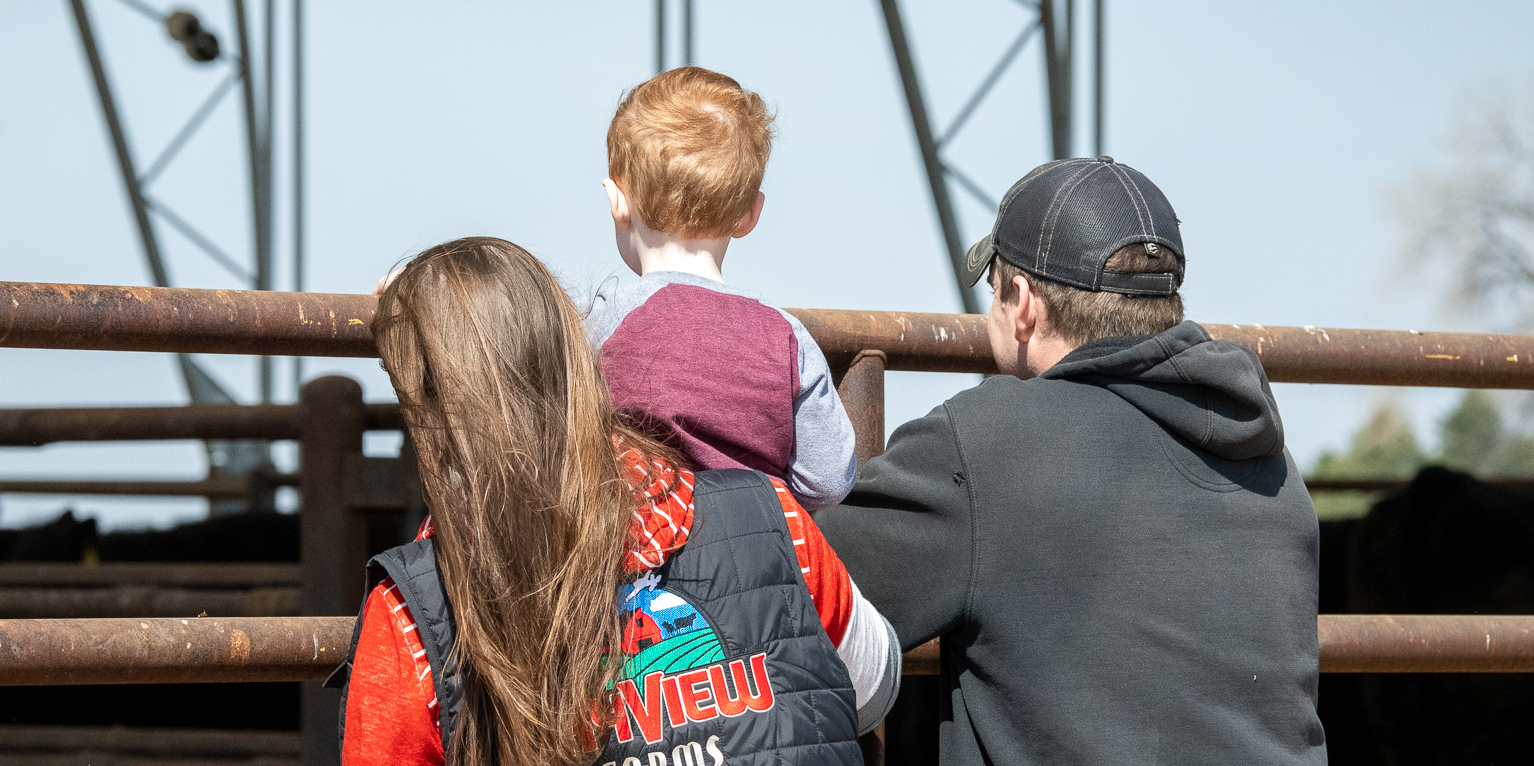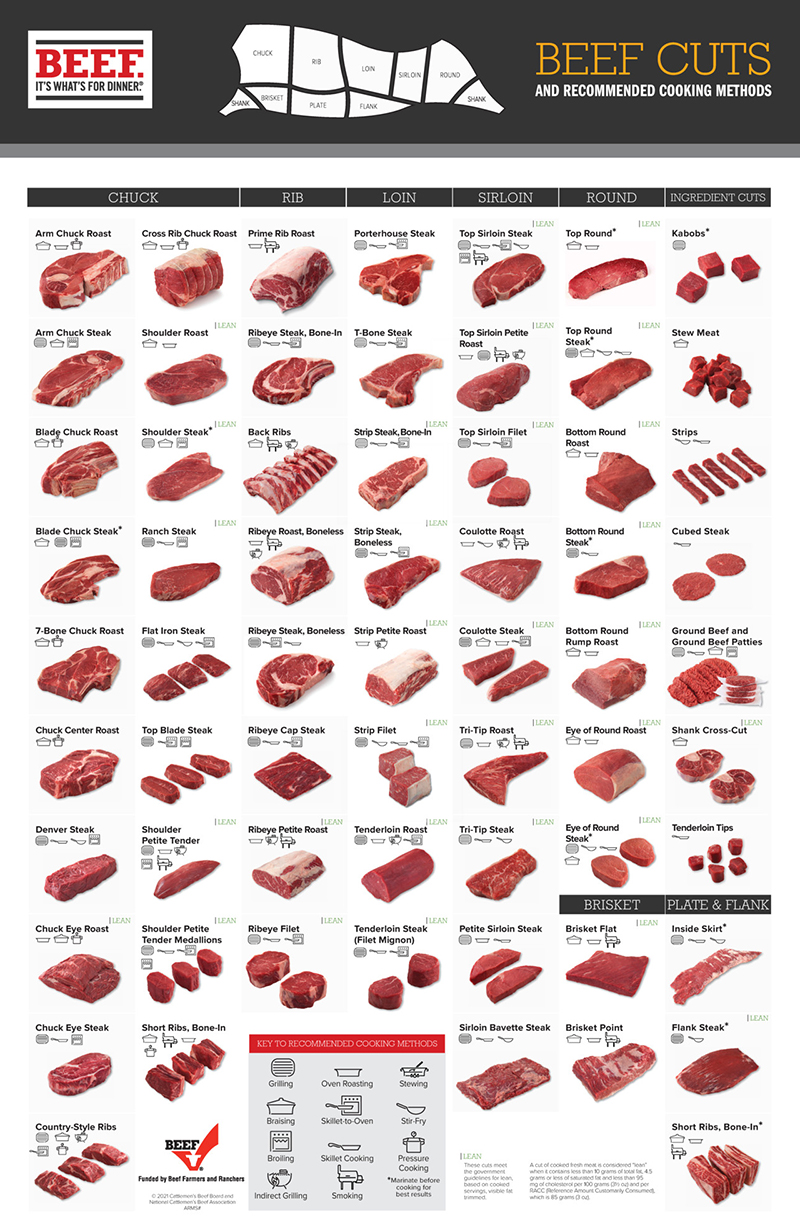Bring Home the Beef
May 12, 2023
By Laura Cunningham, CommonGround Iowa
It’s the perfect Friday night with a gentle breeze and sunshine well into the evening. The type of night you spend every minute outside until sunset signals it’s time to go inside. But wait, what’s for supper?
I’m a cattle farmer from northern Iowa. I also own and operate SkyView Market, a food hub that sources local beef, pork, chicken, eggs and produce from area farms. We work to create a one-stop source for families and food vendors who want to buy local food. In recent years, I’ve seen a resurgence of families interested in buying meat in bulk. There are a host of reasons, including supply chain issues, rising costs and growing families. Buying direct can be a great approach to having the answer to “What’s for supper?” at the ready in your freezer.

The most common question that accompanies this effort is, “How and where do I go to buy meat directly from a farmer?” I love sharing information about this purchasing approach and discussing some considerations to help consumers get the most out of the potential investment.
Before buying direct, consider these things:
1. Is buying in bulk or selecting a bundle of cuts best for you?
2. How can you connect with a farmer?
3. What are the costs?
4. How much meat can I expect?
5. What are my cut and packaging options?
6. Do I have the space for safely storing the products?
7. What is the best way to get on a list to buy directly from a farmer?
Please note, by clicking the following links, you’ll be leaving a partially funded checkoff site.
Step 1: Choosing to Buy in Bulk or a Bundle of Cuts
The first major decision is determining if you want to buy in bulk or select a bundle of cuts to take home. There are pros and cons to both options. A cut of meat is already prepared and packaged. It’s like selecting items from the meat counter or freezer section of the grocery store. Some farmers sell meat products directly to customers this way.
Buying in bulk means purchasing a share of a cow or pig, for example, which would translate to a whole, half or quarter of beef or pork. Bulk buying comes with additional considerations. There is more of an upfront cost, but it typically results in an overall better price per pound since you pay the same for a high-end steak as a pound of ground beef.
Step 2: Connecting with a Farmer
The next step is locating and deciding where to purchase your meat. May is Beef Month in Iowa, so I’ll focus the examples on where to buy local beef. Here in Iowa, we’re fortunate to have a great resource in the Iowa Beef Industry Council (IBIC). IBIC is dedicated to promoting Iowa beef while providing resources that range from where to find beef to how to cook various cuts. They’ve curated a fantastic list of Iowa beef producers who sell direct.
Another great resource is your local farmers market. While not every market will have a beef vendor, farmers are well-connected and can often make recommendations.
More and more families are going directly to the source for food purchases. Ask your friends, and you may be surprised how many acquaintances can recommend a farmer.
Step 3: Understanding the Upfront Cost
One thing that differentiates buying in bulk or selecting cuts is the upfront cost. When purchasing a share (whole, half or quarter), you will be investing upfront. A quarter of beef can cost $650-$850 (sometimes more, depending on the market and type of beef you’re buying). It doesn’t necessarily mean you pay more per pound by buying in bulk, you’re just paying upfront to load your freezer now versus investing incrementally for individual cuts throughout the year. The trade-off is knowing who raised your beef, having the opportunity to learn more about how it was raised and benefiting from the cost savings per meal by buying in bulk.
Step 4: Determining the Quantity of Meat to Expect
One of the more challenging parts of buying meat in bulk is knowing how much to expect in take-home products. Three terms to be familiar with are live weight, hang weight and take-home weight. Live weight is the weight of the animal when alive. That same animal, after harvest, is weighed again by the butcher on an inspected scale and given a “hang weight.” Most farmers selling in bulk will sell by “hang weight.” This is the total pounds of raw meat without the inedible parts. Take-home weight is determined after the butcher follows your cut instructions, discarding excess fat and bone along the way until the cuts are in final form.
For example, let’s say the hang weight of a full beef carcass is 800 pounds. It’s split into four quarter shares for four families at 200 pounds each. Those quarters are made into final cuts as directed by each family and will yield approximately 125 pounds in take-home cuts per family.
Step 5: Selecting Cut Options and Packaging Style
If you’ve agreed to a custom share (whole, half or quarter), selecting the cuts, weight and packaging is one of the most exciting steps. Typically, you will receive a call from the butcher, and they will run through a cuts list. While it would be ideal to have 100% steaks from an order, those cuts only come from certain portions of the animal. You will have an opportunity to select cuts from each section.
For example, from the short loin area of the animal, you have the option of a T-bone steak or a Filet and New York Strip, but not all three. A T-bone is made up of a filet on one side of the bone and a New York Strip on the other.

The butcher will ask how thick to make your cuts. My favorite is 1-inch thick, as it results in a good number of steaks but is thick enough to get a nice medium finish on the grill without too much charring. Options for packaging vary by processor; however, quantity per package and hand-wrapped or vacuum-packed are common options.
Smoked and specialty products, such as beef sticks, jerky, sausages and smoked brisket, are also some of the options offered by lockers throughout the state. There are many options when designing your custom beef package. Don’t be afraid to ask your butcher for recommendations as they want you to enjoy the great taste and convenience of a full freezer of beef.
Step 6: Plan for Safe Storage
Buying in bulk from a farmer means you will need space to store your frozen meat products. I recommend an upright or chest-style deep freeze to keep products fresher, longer. Making deliveries over the years, I’ve seen a lot of different setups for meat storage. I also suggest investing in square crates, dividers or baskets to help sort your meat cuts. It will help you manage inventory and quickly find cuts needed for different recipes. Approximately one-quarter of your custom order will be ground beef with the remainder in steaks, roasts and other cuts.
Once your freezer is packed and organized it also may be a good idea to invest in an alarm system to monitor temperature. It would be so disappointing to dig into the freezer only to discover at some point it stopped working and thawed all those precious packages.
How much space do you need exactly? For a quarter of beef, you will need approximately 4.5 cubic feet of space in a chest freezer or 5.5 cubic feet in an upright-style freezer. When I deliver quarters, I instruct my customers to be ready for three large tailgate-style coolers full of meat to arrive. For a half of beef, plan on 8 cubic feet; a whole beef will require 16 cubic feet of freezer space.
If any of these options seem a bit much for your family, pool together with some friends. You can take advantage of the local quality and great price but reduce the overall amount you’re taking on at once. Be ready to rock, paper, scissors over the steak cuts. There are only so many of each from each beef share!
Step 7: Getting on a Farmer’s Purchasing List
The unique part about raising beef to sell direct is that two years before your order, the animal grows on the farm. One year before your order, the farmer often arranges locker appointments with their processing partner. If you’re considering investing in a beef share, start by contacting local farmers to get on a list. Sometimes they can accommodate a quick order, but more than likely they are at least a few months out on a waiting list. Then, if you finish the process, love your purchase and want to become a regular, reach out to your farmer and express interest in being on a call list again. That way, when they make locker reservations and plan their year, your family will remain top of mind for a repeat order of local beef.
We’re so fortunate to live in Iowa, where family farmers raise and care for some of the best beef in the world. Purchasing in bulk can be confusing the first time, but farmers are ready and willing to answer questions and help you with a great experience. Enjoy a burger or steak and celebrate May Beef Month along with Iowa’s cattle farmers!
Read more about purchasing local beef and supporting Iowa farm families.